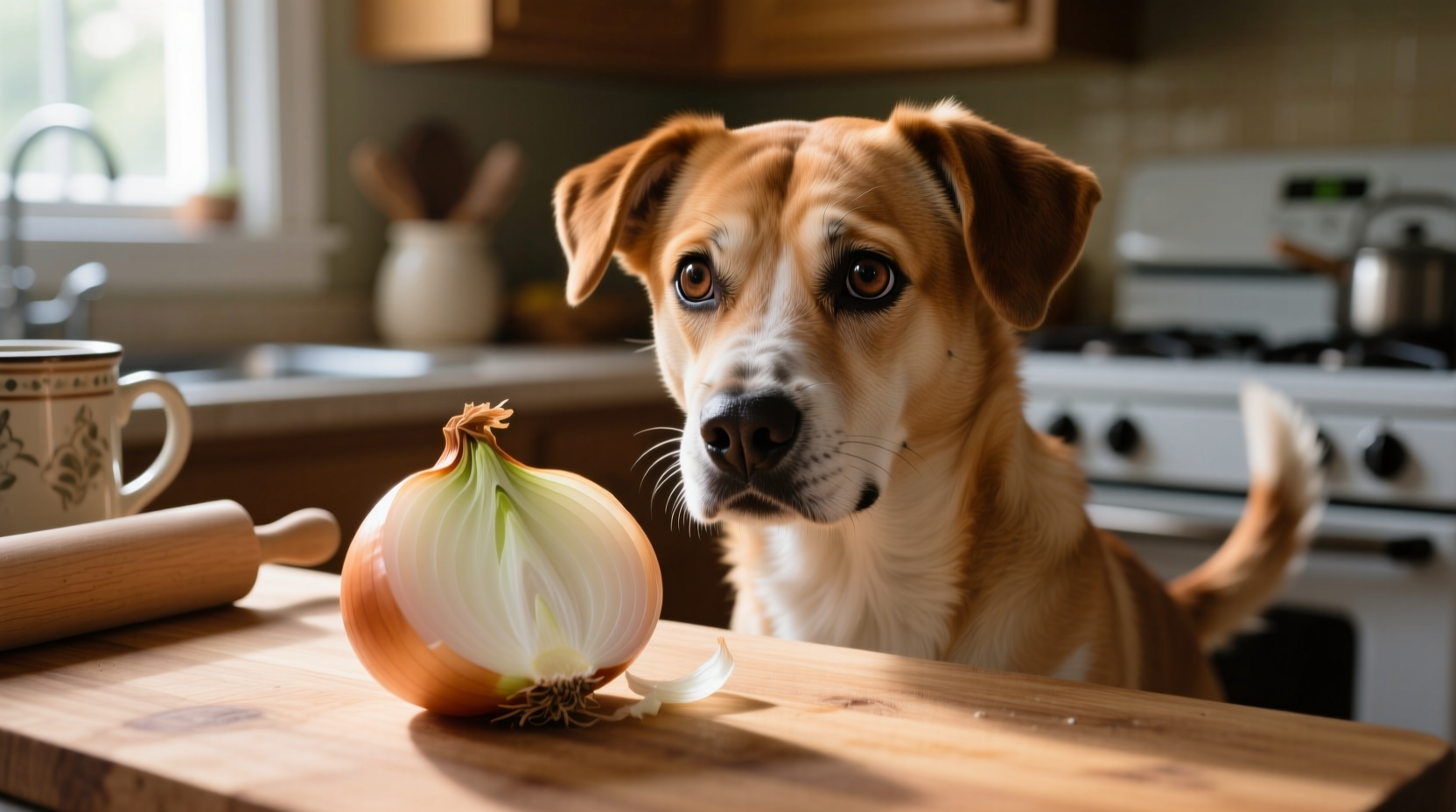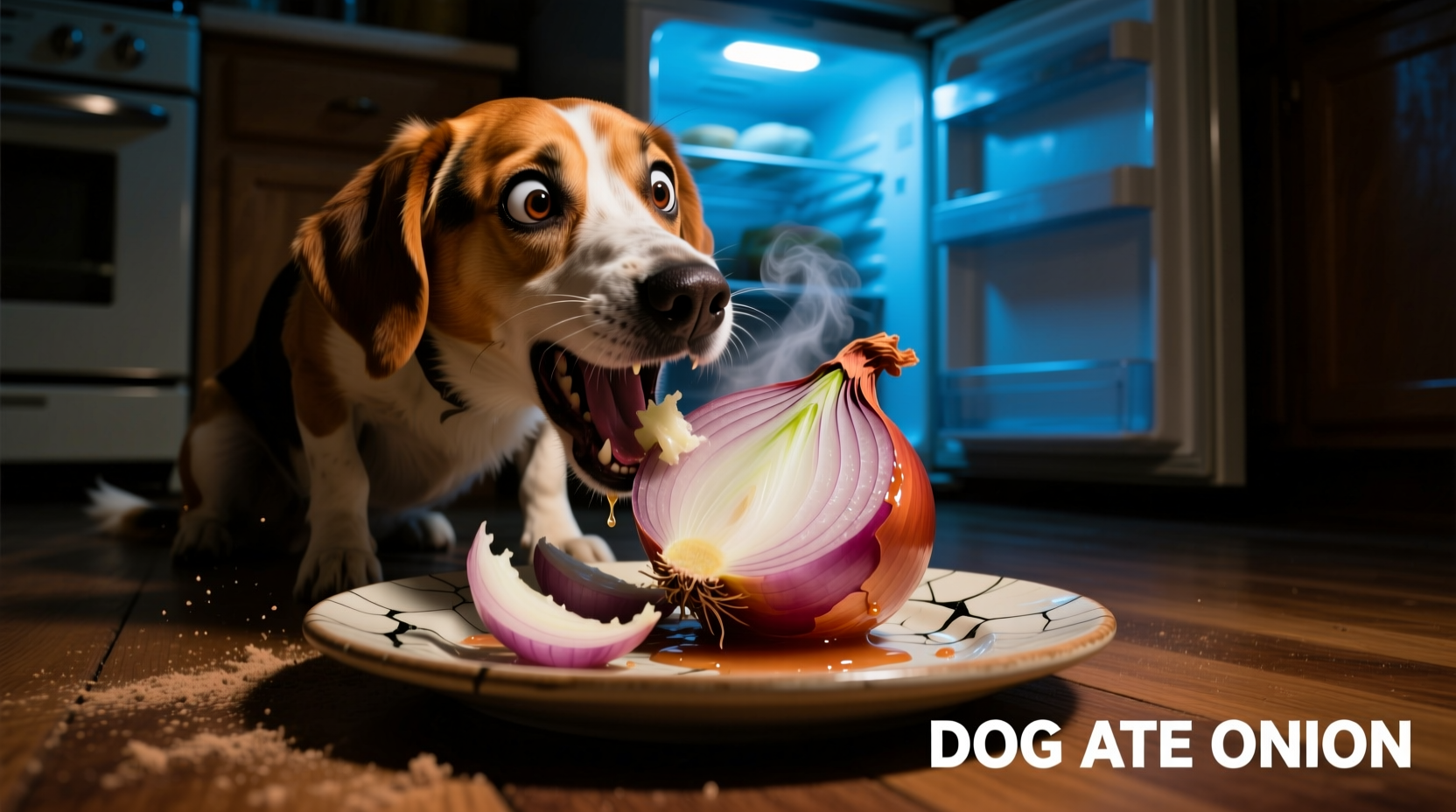Why Onions Are Dangerous for Dogs: The Science Behind the Toxicity
When your dog ingests onion, they're exposed to N-propyl disulfide, a compound that damages red blood cells by oxidizing hemoglobin. This triggers hemolytic anemia—a condition where the body destroys its own red blood cells faster than it can replace them. Unlike humans, dogs lack sufficient enzymes to process these sulfur compounds safely.
| Toxic Compound | Effect on Dogs | Human Equivalent |
|---|---|---|
| N-propyl disulfide | Destroys red blood cells | Harmless in normal consumption |
| Thiosulphate | Causes oxidative damage | Metabolized safely |
| S-methylcysteine sulfoxide | Triggers Heinz body formation | No adverse effects |
According to the American Veterinary Medical Association, all forms of onion—raw, cooked, powdered, or in baby food—pose risks. Just 15-30 grams per kilogram of body weight can cause toxicity. For a 20-pound dog, that's equivalent to less than a single medium onion.

Onion Toxicity Timeline: What to Watch For
Symptoms typically appear 1-4 days after ingestion, but damage begins immediately. Here's what happens inside your dog's body:
- 0-30 minutes: Onion compounds enter the bloodstream
- 2-12 hours: Oxidative damage begins to red blood cells
- 24-48 hours: Heinz bodies form (visible damage to red blood cells)
- 3-5 days: Clinical symptoms become apparent as anemia develops
The Pet Poison Helpline reports that delayed symptoms cause dangerous complacency in 68% of cases. Owners often think “My dog ate onion but seems fine,” not realizing critical damage is occurring internally.
Immediate Actions: First 30 Minutes After Ingestion
If you witnessed your dog eating onion or suspect recent ingestion, take these steps immediately:
- Contact emergency veterinary services – Don't wait to see if symptoms develop
- Note exact time of ingestion and estimate amount consumed
- Do NOT induce vomiting unless instructed by a professional (onion can cause esophageal damage when vomited)
- Collect packaging or remnants for veterinary analysis
- Keep your dog calm and quiet to reduce oxygen demand during potential anemia
Critical Warning Signs Requiring Emergency Care
Monitor your dog closely for these symptoms, which indicate advancing toxicity:
- Excessive drooling or gagging
- Pale or yellow-tinged gums (sign of jaundice)
- Dark red or brown urine (hemoglobinuria)
- Unusual weakness or collapse
- Rapid breathing or heart rate
- Vomiting or diarrhea
A University of Illinois College of Veterinary Medicine study found that dogs showing two or more symptoms have 73% higher mortality without immediate treatment. Even if symptoms seem mild, internal damage may be severe.
Veterinary Treatment Process Explained
When you arrive at the clinic, veterinarians will typically follow this protocol:
- Stabilization: Administer oxygen and IV fluids if anemia is advanced
- Decontamination: Activated charcoal to absorb remaining toxins (if ingestion was recent)
- Diagnostic testing: Complete blood count (CBC) and serum biochemistry to assess red blood cell damage
- Supportive care: Blood transfusion in severe cases, plus medications to support red blood cell production
- Monitoring: 48-72 hour observation period for delayed symptom development
Recovery time varies based on amount ingested and treatment timing. The American Kennel Club Canine Health Foundation reports that dogs treated within 4 hours have 92% survival rates, compared to 47% when treatment begins after symptoms appear.
Preventing Future Onion Exposure: Practical Home Strategies
Protect your dog with these evidence-based prevention methods:
- Store onions and garlic in closed cabinets—dogs can smell them through paper bags
- Dispose of cooking scraps immediately in outdoor bins with secure lids
- Check baby food labels (some contain onion powder as flavor enhancer)
- Avoid sharing human meals—just 1 tablespoon of onion powder equals one whole onion
- Train “Leave it” command using positive reinforcement methods
Remember that all members of the Allium family are dangerous: onions, garlic, chives, leeks, and shallots. Garlic is actually five times more toxic than onions, making even small amounts extremely dangerous.











 浙公网安备
33010002000092号
浙公网安备
33010002000092号 浙B2-20120091-4
浙B2-20120091-4